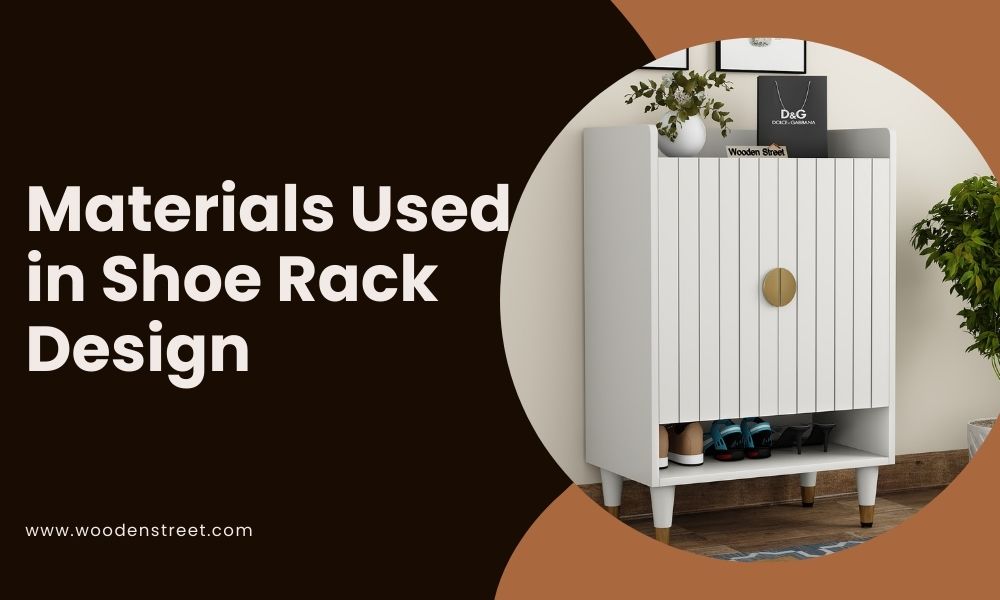Materials Used in Shoe Rack Design
Shoe racks are essential furniture pieces in organizing and preserving footwear. They not only serve a functional purpose but also contribute significantly to interior aesthetics. The choice of materials in designing shoe racks is pivotal in their durability, aesthetics, and environmental impact. Exploring various materials provides insights into crafting the perfect shoe rack that suits individual preferences and practical needs.
What materials are used to make shoe racks?
Wooden Materials for Shoe Rack Design
Wood remains a classic choice for shoe racks due to its durability and timeless appeal. Oak, pine, and mahogany are popular choices, each offering distinct advantages and drawbacks. While wooden shoe racks exude elegance and sturdiness, they might be susceptible to moisture damage without proper maintenance.
Metallic Materials
Metallic materials like stainless steel or iron offer robustness and a modern aesthetic to shoe racks. However, they can be prone to corrosion in certain environments. Understanding their strengths and weaknesses aids in selecting the long-lasting most suitable metal shoe racks.
Plastic
Plastic shoe racks are cost-effective and lightweight, making them ideal for temporary or portable solutions. Yet, their durability might be a concern, and the environmental impact of these materials warrants consideration.
Fabric
Fabric or shoe rack with cover provide versatility and portability. They are suitable for smaller spaces and travel-friendly shoe storage. However, maintaining cleanliness and durability poses challenges with these materials.
Combining Materials
Hybrid designs incorporating multiple materials offer a blend of functionalities. Combining wood, metal, or fabric can create versatile and aesthetically pleasing shoe racks that cater to various needs.
Innovative Materials and Technologies
Modern shoe rack designs explore innovative materials and incorporate technological advancements for enhanced functionality and style. Integrating smart features and sustainable materials represents the future of shoe rack design.
Which type of shoe rack is best?
Choosing the best type involves considering your available space, the number and types of shoes you have, the desired style, and any specific features you may need. For example, a wooden rack might be suitable if you want a long-lasting and elegant option. Conversely, if portability and cost-effectiveness are priorities, a fabric or plastic rack might be a better fit. Ultimately, the best type of shoe rack is one that meets your specific needs and complements your space.
Factors Influencing Material Choice
Space constraints, aesthetic preferences, and practical considerations influence the choice of materials in designing shoe racks. Understanding these factors aids in making informed decisions.
Design Trends and Inspirations
Contemporary shoe rack designs are influenced by current trends and design movements. Exploring these trends provides inspiration for unique and functional shoe rack designs.
Sustainability in Material Selection
Embracing eco-friendly materials and recycling initiatives promotes sustainable shoe rack designs. Considering environmental impact becomes crucial in material selection.
Tips for Choosing the Right Material
Durability and Strength
The longevity of a shoe rack largely depends on the material used. Opt for materials known for their durability, capable of withstanding the weight, and regular use of shoes. Consider sturdy materials that won’t succumb to wear and tear easily.
Design and Aesthetics
The material chosen should complement the interior design. Different materials offer varying aesthetics, from rustic wooden racks to sleek metallic designs. Harmonizing the material with the existing decor enhances the overall appeal.
Maintenance and Cleanliness
Ease of cleaning is vital for maintaining a pristine shoe rack. Some materials require minimal upkeep, while others may demand regular care. Choosing a material that aligns with your maintenance preferences ensures the rack’s longevity.
Environmental Impact
For eco-conscious consumers, exploring sustainable material options is crucial. Look for materials that are recyclable or sourced sustainably to reduce environmental impact and contribute to a greener lifestyle.
Cost-effectiveness
Balancing cost and quality is essential. While some materials might be more expensive upfront, they might offer long-term benefits such as durability and longevity, making them a cost-effective choice.
Compatibility with Shoe Types
Consider the variety of shoes the rack will hold. Different materials might suit specific shoe types better, ensuring proper organization and support for various footwear.
Conclusion
Materials used in shoe rack design offer a spectrum of choices catering to diverse needs. From traditional wood to innovative tech-integrated materials, understanding their characteristics aids in crafting efficient, durable, and stylish shoe racks.



